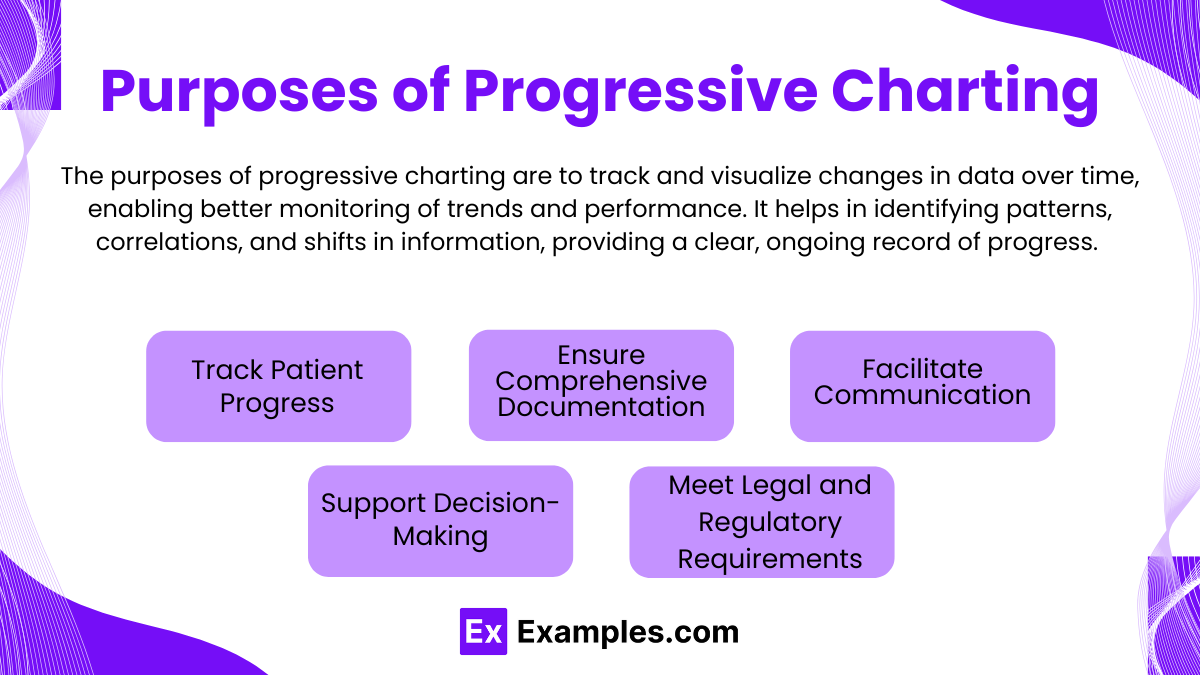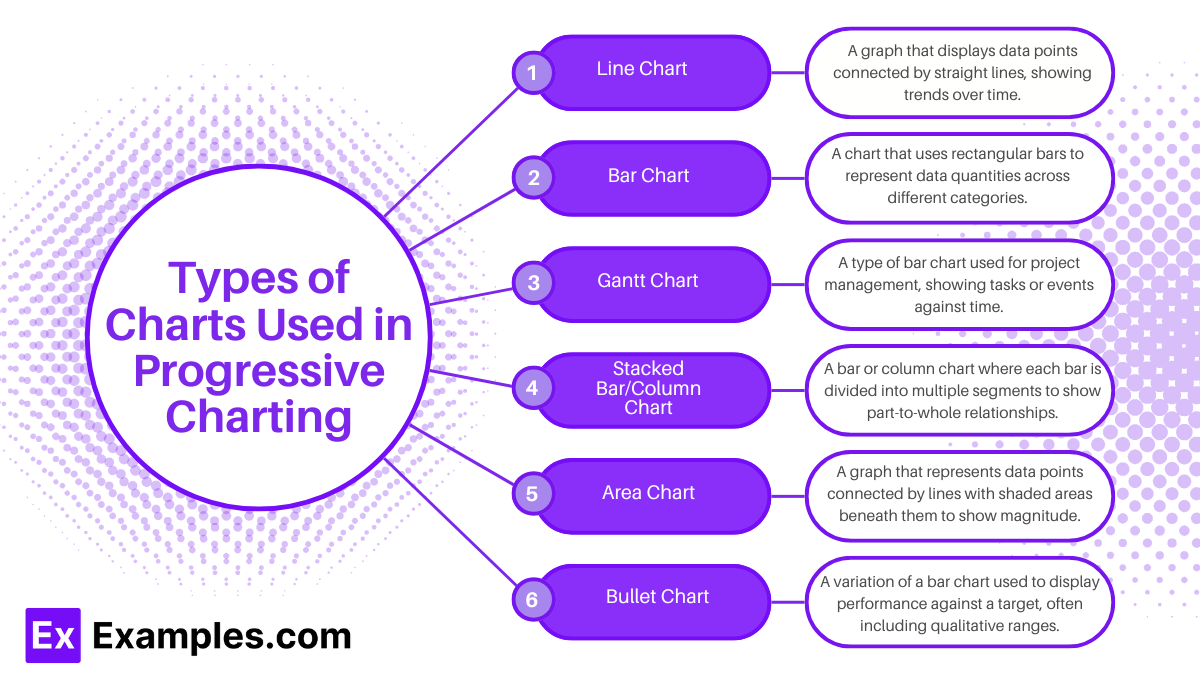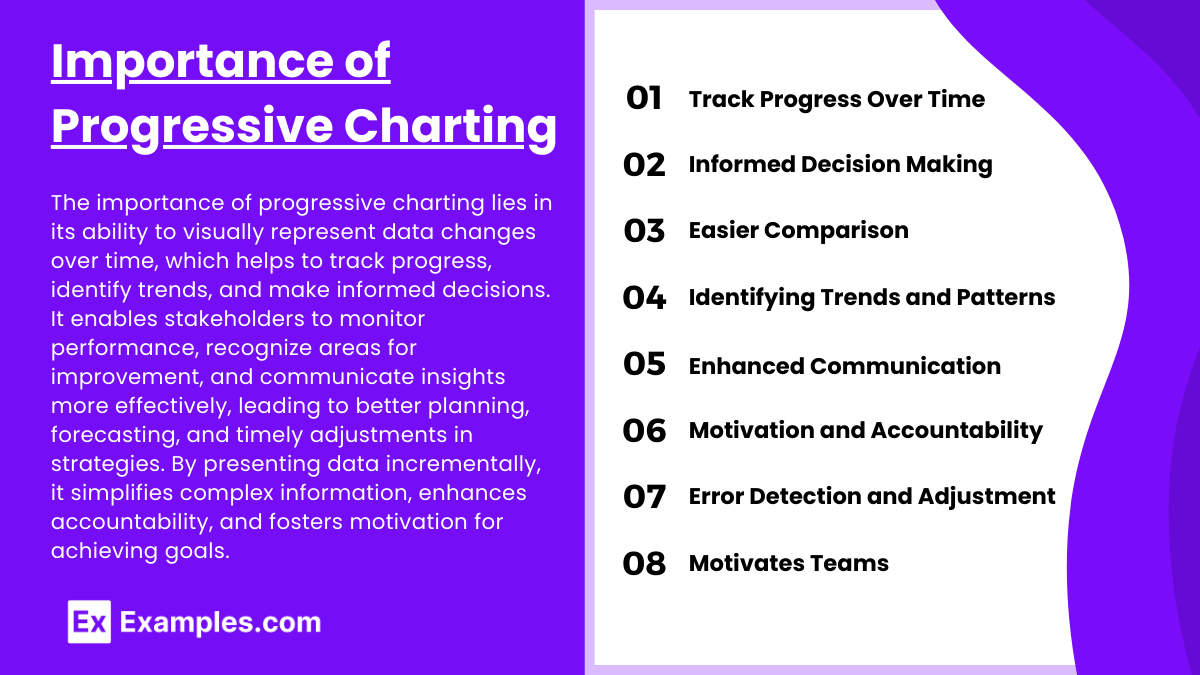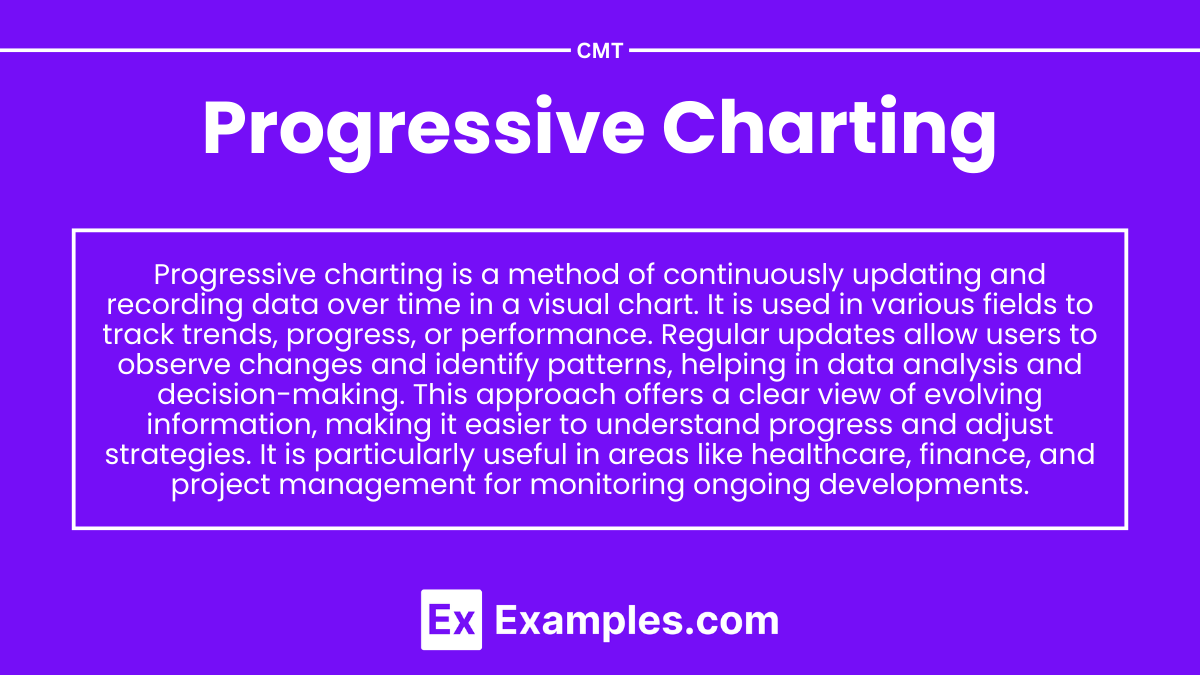Preparing for the CMT Exam requires a solid understanding of Progressive Charting, a technique that refines charts and indicators in real-time to adapt to evolving market conditions. By updating trendlines, support levels, and indicators, traders can identify breakout points, reversals, and consolidations more effectively. This adaptive approach enhances decision-making, aligns strategies with market shifts, and ensures greater accuracy in trading outcomes.
Learning Objectives
In studying Progressive Charting for the CMT Exam, you should learn to understand its importance in visualizing price movements and identifying key patterns over time. Progressive charting involves evaluating consecutive time periods to highlight the evolution of trends, allowing for better identification of trend reversals, breakouts, and continuation patterns. This process includes analyzing historical price action, volume, and trend strength across multiple time periods to validate signals. Techniques such as point-and-figure charts, range charts, and tick charts help refine trading strategies. Mastery of progressive charting is crucial for improving chart analysis precision and achieving success in the CMT Exam.
Purposes of Progressive Charting

- Track Patient Progress: Progressive charting helps healthcare providers track a patient’s health status over time, documenting changes, improvements, or deteriorations in their condition.
- Ensure Comprehensive Documentation: It ensures that all important patient data, observations, and interventions are recorded systematically, providing a thorough medical history.
- Facilitate Communication: Progressive charting fosters communication among healthcare professionals by providing updated and detailed patient information that can be accessed by all relevant parties.
- Support Decision-Making: With continuous updates, progressive charting helps medical teams make informed decisions regarding treatment plans, adjustments, or interventions based on the latest patient data.
- Meet Legal and Regulatory Requirements: It helps ensure compliance with healthcare regulations and standards by maintaining an accurate and complete record of patient care.
Types of Charts Used in Progressive Charting

Progressive charting is commonly used in industries like project management, finance, and data analysis to show the ongoing progression of specific activities, trends, or metrics over time. Various types of charts can be used in progressive charting to visualize data. Here are some of the most common types:
1. Line Chart
- Description: A line chart displays data points connected by straight lines. It is widely used to show trends over time or to track progress on a continuous scale.
- Use case: Tracking project milestones, stock prices, or progress toward a goal.
2. Bar Chart
- Description: A bar chart uses horizontal or vertical bars to represent data. Each bar represents a category, and the length of the bar indicates the value.
- Use case: Comparing different categories or tracking progress across different time periods or teams.
3. Gantt Chart
- Description: A Gantt chart is used to represent a project’s timeline. It shows the start and end dates of different tasks along with dependencies between them.
- Use case: Project management to track the progress of multiple tasks over time.
4. Stacked Bar/Column Chart
- Description: A stacked bar or column chart shows the total value and how it is divided into multiple categories or segments. Each bar or column is divided into different segments that represent different components of the total value.
- Use case: Tracking the progress of different components that make up a larger whole (e.g., cumulative sales by region).
5. Area Chart
- Description: Similar to a line chart, an area chart fills the space beneath the line with color to highlight the magnitude of change over time.
- Use case: Tracking cumulative progress or growth over time, like revenue accumulation or project completion.
6. Bullet Chart
- Description: A bullet chart is a variation of a bar chart that represents progress towards a target goal, often using markers for thresholds.
- Use case: Monitoring performance against goals or benchmarks, such as sales targets.
Importance of Progressive Charting

- Track Progress Over Time: Progressive charting enables the visualization of trends or progress across a period. This is particularly useful for projects, financial performance, health data, or student learning. It helps stakeholders see improvements or declines over time and identify patterns that might not be visible in single data points.
- Informed Decision Making: By updating charts with real-time data, decision-makers can base their choices on the latest available information. Progressive charting ensures that decisions are not made on outdated or incomplete data, helping to minimize risks and maximize opportunities.
- Easier Comparison: Progressive charts often allow for the comparison of current data against previous data, benchmarks, or goals. This visual comparison helps in evaluating the effectiveness of strategies, plans, or actions, and understanding how far the target is from the current state.
- Identifying Trends and Patterns: By constantly updating and tracking data over time, progressive charting highlights emerging trends, such as upward or downward movements. These trends can help anticipate future outcomes and drive proactive actions or interventions.
- Enhanced Communication: Progressive charts make it easier to communicate complex data in a simple, visual format. This is especially beneficial in team settings or presentations where stakeholders need to quickly grasp key information, understand project status, or analyze performance.
- Motivation and Accountability: In team or individual settings, seeing progress visualized on a chart can be motivating. It helps individuals and teams stay focused on their goals, offering a clear visual representation of achievements or areas needing improvement, which encourages accountability.
- Error Detection and Adjustment: Continuously charting progress allows for the detection of errors or anomalies early. If something deviates from the expected path, adjustments can be made promptly before issues grow larger, reducing the impact of mistakes.
- Motivates Teams: Showing incremental progress can motivate teams by demonstrating that goals are being achieved, boosting morale and focus.
Examples
Example 1. Financial Forecasting
Progressive charting is essential for financial analysts when projecting future revenue and expenses over time. By using this technique, analysts can visually represent data trends, making it easier to predict potential outcomes for businesses. The chart gradually builds on previous data points, ensuring a clear view of the company’s financial trajectory.
Example 2. Project Management
Project managers use progressive charting to track the progression of various tasks and milestones. By visualizing project timelines and progress, teams can assess whether they are on track, identify delays, and adjust resources as needed. This method provides a real-time snapshot of the project’s status, helping managers make informed decisions.
Example 3. Sales Performance Tracking
Progressive charting is frequently employed in sales performance tracking to monitor the growth or decline of sales figures. Sales teams use this technique to track targets against actual sales, enabling them to identify patterns and adjust strategies to meet goals. By continuously updating the chart, sales managers can take immediate corrective actions.
Example 4. Healthcare Monitoring
In the healthcare industry, doctors and nurses use progressive charting to track a patient’s vital signs, symptoms, and treatment progress. This continuous updating helps healthcare providers monitor patient conditions over time, identify trends, and make informed medical decisions. The approach is especially useful for managing chronic conditions or post-operative recovery.
Example 5. Educational Progress Tracking
Teachers and administrators use progressive charting to track student performance across multiple assessments. This allows educators to see students’ learning growth, identify areas where they may need extra help, and adjust teaching methods accordingly. It also helps schools measure the effectiveness of their curriculum over time, improving overall educational outcomes.
Practice Questions
Question 1
Which of the following best describes the purpose of progressive charting in healthcare?
A) To track the patient’s medical history over time.
B) To monitor and document a patient’s clinical progress on a regular basis.
C) To assess the effectiveness of a specific treatment after each visit.
D) To record all medications prescribed to the patient.
Answer: B) To monitor and document a patient’s clinical progress on a regular basis.
Explanation:
Progressive charting refers to the ongoing documentation of a patient’s clinical status and treatment progress, typically during each visit or assessment. It helps healthcare providers track changes, improvements, or deteriorations in a patient’s condition over time. While all other options (A, C, and D) are related to aspects of patient care, they are not specifically about monitoring and documenting progress in a continuous and regular manner as is the purpose of progressive charting.
Question 2
In progressive charting, how is information typically organized to reflect the patient’s evolving status?
A) By listing all medical conditions diagnosed in the past.
B) By summarizing all treatment plans from the first visit to the most recent.
C) By tracking key changes in the patient’s condition, symptoms, and response to treatments over time.
D) By recording only subjective opinions of healthcare providers.
Answer: C) By tracking key changes in the patient’s condition, symptoms, and response to treatments over time.
Explanation:
Progressive charting focuses on documenting key changes in the patient’s condition and their response to treatment, as this is critical for effective ongoing care. This approach ensures that healthcare providers can compare past and present data to assess whether the treatment is working or if the condition is improving or worsening. While options A and B may relate to some components of patient history, they do not describe the specific nature of progressive charting, which is focused on dynamic tracking of changes. Option D is incorrect because progressive charting involves objective clinical observations, not subjective opinions.
Question 3
Which of the following is NOT typically included in progressive charting?
A) Vital signs and laboratory results.
B) The patient’s response to recent treatments or interventions.
C) A detailed summary of the patient’s family medical history.
D) Notes on any changes in the patient’s condition or symptoms.
Answer: C) A detailed summary of the patient’s family medical history.
Explanation:
Progressive charting primarily focuses on the patient’s current clinical status, response to treatments, and any changes in their condition. While family medical history is important for overall assessment and diagnosis, it is not a primary focus of progressive charting, which is more concerned with documenting ongoing patient progress and clinical observations. Options A, B, and D all directly relate to the ongoing monitoring and tracking of the patient’s health over time, which is the main purpose of progressive charting.


